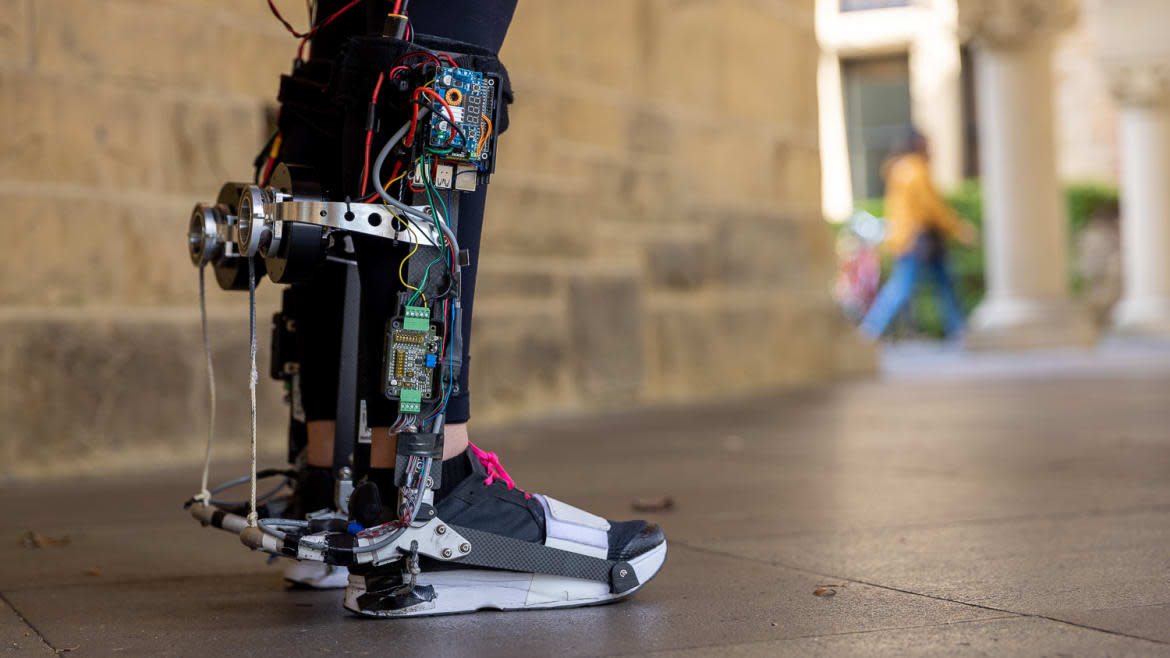This Robotic Boot Lets You Walk Faster and Easier

From Iron Man to Aliens, exoskeletons have long fascinated pop culture—and for good reason. The ability to climb into a suit that makes us stronger and faster and more superhuman is an intoxicating prospect. But it’s one that has remained in the realm of science fiction… that is, until now.
In a study published Monday in the journal Nature, researchers at the Stanford Biomechatronics Laboratory have developed a “robotic boot” that can help you walk faster and easier than you would normally. The device is also untethered and battery powered, which means there are no cumbersome cords needed to keep it powered and the sensors working.
“This exoskeleton personalizes assistance as people walk normally through the real world,” Steve Collins, a mechanical engineer at the lab and co-author of the paper, said in a press release. “And it resulted in exceptional improvements in walking speed and energy economy.”
The exoskeleton works by applying more torque to your ankle to help push your feet off the ground as you walk and run. The result is a 9 percent boost in walking speed while using 17 percent less energy while traveling. The study’s authors add that the energy conservation and speed is the equivalent of “taking off a 30-pound backpack” before moving around.

A person walking while being assisted by a portable ankle exoskeleton. As the person walks, the assistance pattern is personalized to maximize the mobility benefits for each individual. The exoskeleton records the ankle angle and velocity as the person moves to evaluate how different patterns of assistance impact the effort it takes to walk with the device.
The robotic boot also uses an AI and array of sensors to customize itself to its users’ personal gaits and movements. After about an hour of walking around in one for the first time, it learns how to best optimize its torque to the wearer.
“The first time you put an exoskeleton on can be a bit of an adjustment,” Ava Lakmazaheri, a biomechanics researcher at the lab and volunteer in the study, said in the release. “But, honestly, within the first 15 minutes of walking, it starts to feel quite natural. Walking with the exoskeletons quite literally feels like you have an extra spring in your step. It just really makes that next step so much easier.”
Don’t expect these exoskeletons to be utilized in Iron Man suits quite yet. The idea is that these robotic boots could be used to assist the elderly or patients suffering from limited mobility in their legs. It could allow many who struggle to walk be able to move about their daily life.
“We’ve been working towards this goal for about 20 years, and I’m honestly a little stunned that we were finally able to do it,” Collins said. “I really think this technology is going to help a lot of people.”
Got a tip? Send it to The Daily Beast here
Get the Daily Beast's biggest scoops and scandals delivered right to your inbox. Sign up now.
Stay informed and gain unlimited access to the Daily Beast's unmatched reporting. Subscribe now.

